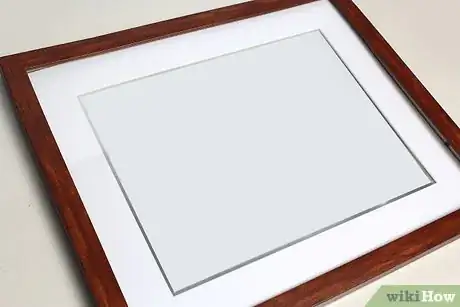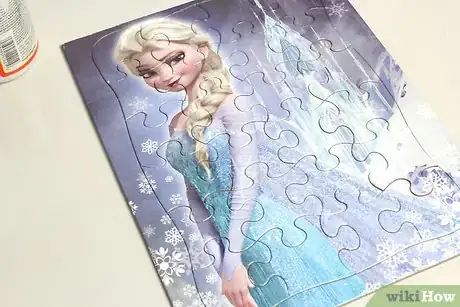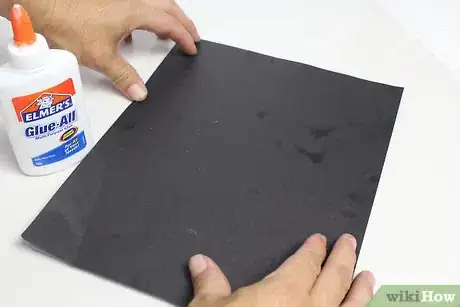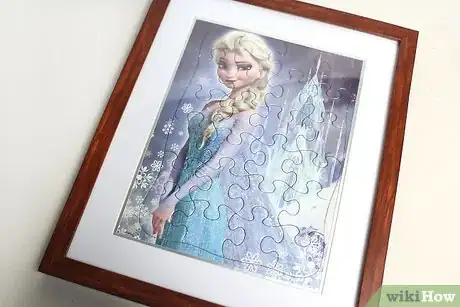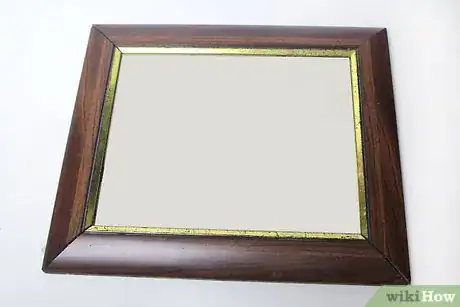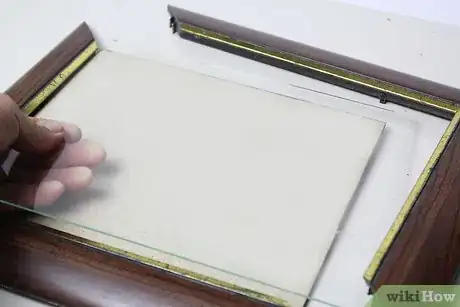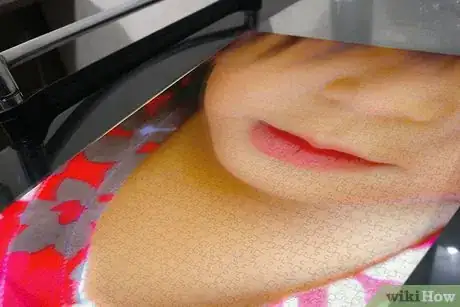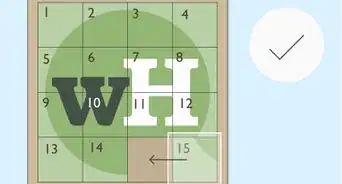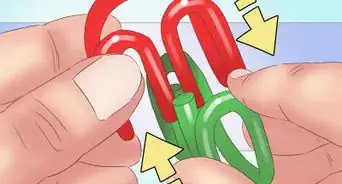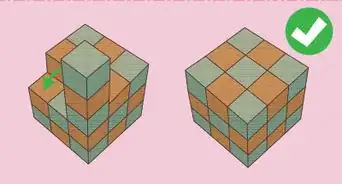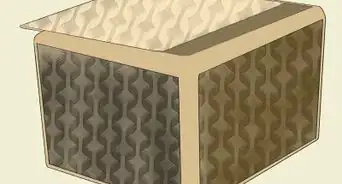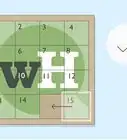This article was co-authored by Nicole Bolin. Nicole Bolin is a Crafting Specialist and the CEO of Stencil, a DIY Craft Studio in Phoenix, Arizona. Nicole specializes in interior design and various craft and DIY projects. Nicole holds a Certificate in Interior Design from the New York Institute of Art and Design. She opened Stencil in 2017 to teach others to create DIY projects that fit their home and lifestyle.
wikiHow marks an article as reader-approved once it receives enough positive feedback. This article received 20 testimonials and 100% of readers who voted found it helpful, earning it our reader-approved status.
This article has been viewed 653,668 times.
Sometimes, a completed puzzle is too beautiful to dismantle, or the idea is too disheartening after all the hard work that's gone into it. Unless you purchase a special jigsaw puzzle frame, which is often more expensive than the puzzle, framing the puzzle will require gluing it together permanently.
Steps
Framing a Puzzle with Glue
-
1Use this method to create a permanent decoration for personal enjoyment. If you aren't interested in disassembling the puzzle at any point, you can use a specialized glue to permanently attach the pieces together. This can create a glossier, sturdier piece of artwork, but may reduce the value of your puzzle. Because of this, this method is not recommended for antique or valuable puzzles, and some puzzle hobbyists do not use it at all.
- You can even use a glue gun to apply the glue. Different glue guns use different diameter glue sticks. Make sure you purchase the correct size glue stick for your gun.[1]
- Slide the glue stick into the back of the gun. Then press and release the trigger a few times. It will pull the glue stick into the gun.[2]
- Plug in and turn on the gun. Let it heat up. Then squeeze the trigger to release the glue onto the item you want to stick.[3]
-
2Find a frame that fits your puzzle. Because your assembled jigsaw puzzle may have slightly different dimensions than listed on the box, use a ruler or tape measure to get an accurate measurement before selecting a frame.
- Some craft shops sell frames in pieces, which you can reassemble into rectangular frames with a custom length/width combination.[4]
Advertisement -
3Cut a backing material to fit the frame. Select poster board, foam board, or sturdy cardboard approximately 1/4 inch (6 mm) thick, and cut a rectangle that can be inserted into your frame.This material will provide a backing for the puzzle, keeping it flat and in the frame. A utility knife is recommended to make even cuts, along with a T-square or protractor to ensure the sides are cut to at 90º angle.
- Avoid using thin cardboard or other easily bent material, as this may cause the puzzle to warp over time.
-
4Slide a layer of wax paper under the puzzle. Protect the surface underneath the puzzle by carefully slipping something flat and disposable, such as wax paper, underneath the puzzle.
-
5Use a rolling pin to flatten the puzzle. Small bumps and loose pieces can be evened out before gluing with a rolling pin.[5] Press down on the rolling pin as you move it across the puzzle surface several times.
-
6Brush puzzle glue over the surface of the puzzle. Purchase specialized jigsaw puzzle glue from a craft store or online. Use a paintbrush to apply this glue across the surface of the puzzle, covering the entire area with a thin layer. Pay special attention to the cracks between pieces.
- If your puzzle glue comes in powdered form, read the instructions to learn how to prepare it before use.
-
7Wait for the glue to dry. Your bottle of puzzle glue may contain specific directions, telling you how long to wait for the glue to dry. If it does not, leave the glued puzzle alone for at least two hours.[6] Test to see if its ready by gently lifting one end of the puzzle. If the pieces are still loose or coming apart, wait longer or apply more glue.
-
8Glue the puzzle to the backing material. Apply glue to the surface of the foam board or cardboard you cut earlier. Carefully transfer your glued puzzle over the foam board, aligning it with the edges. Press the puzzle down onto the foam board, then scrape off any excess glue that was squeezed out from between the two objects.
- If the glue does not hold or looks uneven, you may pay someone at a craft shop to "dry mount" the puzzle professionally onto a backing material.
-
9Let the puzzle dry for at least 24 hours, weighing it down if necessary. Leave the puzzle alone for at least 24 hours so the glue can achieve maximum strength. If the puzzle looks bent or uneven, weigh it down during this drying period with a large book or other heavy object with a larger surface area than the puzzle.[7]
- Don't use heavy objects with a small or uneven surface area, as these may compress your puzzle unevenly, or even damage it.
-
10Frame the puzzle. Once the puzzle and backing material are dry, place them in the frame. Lock them into the frame using the tabs or arms at the back, or by whichever method is built into the frame.
- Optionally, fit a glass or hard plastic cover over the puzzle to prevent scratches. For best preservation of the puzzle's colors, use a UV-resistant glass cover.[8]
Displaying a Puzzle without Glue
-
1Measure your puzzle's length and width. Hobbyists who wish to preserve the usability and value of a puzzle, but still wish to display, will need a specialized frame. While these frames are often described as "500 piece puzzle frames" or "1,000 piece puzzle frames," purchasing one based on actual length and width measurements is recommended for more accuracy. Because the frame will be the only thing keeping your puzzle in place, it is important to find a frame that will fit your puzzle as securely as possible.
-
2Choose a jigsaw puzzle frame that does not require glue. Some frames called "jigsaw puzzle frames" are just ordinary frames made to fit common puzzle sizes, and will not hold your puzzle together without glue. Instead, you'll need a specialized frame, which is often more expensive. While you may attempt to use any frame with a solid back and front portion, finding one specific to jigsaw puzzles is recommended, as a jigsaw puzzle is thicker and more fragile than the posters and photographs ordinary frames are usually used for.
- Try the glass-fronted, aluminum MyPhotoPuzzle frames, or the adjustable-size Versaframe.
- Note: there are a couple cheaper options for displaying your puzzle, at the end of this section.
-
3Assemble a MyPhotoPuzzle frame. The exact design of a jigsaw puzzle frame varies between brands. For MyPhotoPuzzle frames, carefully press the glass onto the puzzle surface, flip the glass and puzzle together face down, then lower the backboard over the back of the puzzle. Make sure one of the hanging attachment on the backboard is located at the top of the puzzle, or it will be upside down. Lower the frame over the backboard and glass, then lower every clip around the backboard's edge to fasten it to the frame.[9]
-
4Assemble a Jigframe. The Jigframe comes with a sheet of acrylic plastic, protected with paper on both sides. Briefly warm the sheet in the sun or near a heater if necessary to help peel off the paper. Slide or construct the puzzle on top of one of the included "Jigsheets." Slide open the drawer in the frame, place the Jigsheet with the puzzle face-up on top of it into the drawer, then cover the puzzle with the acrylic sheet. Slide it back into the frame.
- Instead of sliding the puzzle, You can use one of the Jigsheets to lay over the puzzle and help keep it steady while you flip it over, then lay the other Jigsheet over the back of the puzzle, and flip it face up again.
- If the puzzle is much smaller than the frame, a small piece of cardboard is included to place on the Jigsheet, below the puzzle's lower edge, to center the puzzle.
-
5Follow the instructions that come with other frames. Other companies may use a different system than the ones described above. An adjustable frame may be sold in two pieces, which are slid together over the puzzle and locked into the correct position.
-
6Alternatively, display it under a glass coffee table. Some coffee tables have an additional glass surface that can be screwed on and off the table. Place a jigsaw puzzle under this layer for display.
-
7Use a clear plastic preservation envelope instead. These envelopes are typically made of polypropylene, and may be labeled "archival grade." This will keep your puzzle safe from moisture and other sources of damage. However, these are more typically used for prints and photographs, and may be hard to find in sizes appropriate for medium or large puzzles.
Community Q&A
-
QuestionCan I glue a 3D puzzle?
 Community AnswerYes, just do one side at a time using puzzle glue or Modge Podge. Make sure each side dries thoroughly before gluing another side.
Community AnswerYes, just do one side at a time using puzzle glue or Modge Podge. Make sure each side dries thoroughly before gluing another side. -
QuestionHow can I flip the puzzle over?
 Community AnswerYou can use a puzzle mat (purchased from Amazon) that's designed to flip puzzles. You can also glue the front of the puzzle, let it dry, and then flip it over to the back.
Community AnswerYou can use a puzzle mat (purchased from Amazon) that's designed to flip puzzles. You can also glue the front of the puzzle, let it dry, and then flip it over to the back. -
QuestionCan I cover the face of a puzzle twice with the puzzle glue?
 Community AnswerYes. It is okay to give it several coats with puzzle glue or Mod Podge.
Community AnswerYes. It is okay to give it several coats with puzzle glue or Mod Podge.
Warnings
- Handle the puzzle carefully while moving, even if glued.⧼thumbs_response⧽
Things You'll Need
- Puzzle
- Frame
- Puzzle Glue
- Foam Board
- Utility Knife
- T-Square (optional)
References
- ↑ https://www.bobvila.com/articles/how-to-use-a-glue-gun/
- ↑ https://www.bobvila.com/articles/how-to-use-a-glue-gun/
- ↑ https://www.bobvila.com/articles/how-to-use-a-glue-gun/
- ↑ http://www.ebay.com/gds/Preserving-Puzzles-Make-Them-Last-and-Look-Great-/10000000015761477/g.html
- ↑ http://www.puzzlewarehouse.com/how-to-glue-and-mount-a-puzzle/
- ↑ http://www.puzzlewarehouse.com/how-to-glue-and-mount-a-puzzle/
- ↑ http://www.puzzlewarehouse.com/how-to-glue-and-mount-a-puzzle/
- ↑ http://www.puzzlewarehouse.com/how-to-frame-a-puzzle/
- ↑ https://www.myphotopuzzle.co.uk/puzzleframes/manual
About This Article
To frame a puzzle, start by finding a frame that fits the size of the assembled puzzle. Next, slip a piece of wax paper underneath the finished puzzle and use a rolling pin to flatten the puzzle's surface as much as possible. Then, brush puzzle glue over the surface of the puzzle, paying special attention to the cracks between pieces. Once the glue dries, glue the puzzle to the frame backing and give it 24 hours to dry completely. Finally, place the puzzle in the frame. For tips on framing a puzzle that you don't want to glue permanently, read on!

